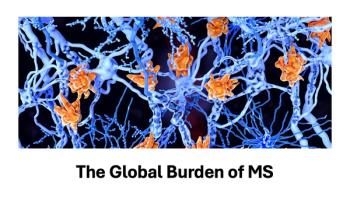
CMS divulges CPC+ regions: What you need to know
Doctors in these states are now eligible for CPC+. Experts share how to prepare.
CMS has announced regions for the Comprehensive Primary Care Plus (CPC+) program for Medicare beneficiaries.
Related:
The CPC+ program will launch in 14 regions, including 11 states: Arkansas, Colorado, Hawaii, Michigan, Montana, New Jersey, Oklahoma, Oregon, Rhode Island and Tennessee.
CPC+ is a regionally-based, multipayer care delivery and alternative payment model (APM) that rewards value and quality through an innovative payment structure to support comprehensive primary care. The model will offer two tracks with incrementally advanced care delivery requirements and payment options to meet the diverse needs of primary care practices.
Jones
“It’s important for healthcare leaders to understand this new model represents an alternative payment model [APM] which was mandated in the 2015 MACRA legislation-that’s important to remember because APM’s are exempt from the Merit-based Incentive Payment System [MIPS] and could lead to enhanced payments-5% lump sum bonus between 2019 and 2023-and slightly higher fee schedule updates in 2026 and beyond,” according to Randy Jones, senior vice president of Consulting Services (West) at Culbert Healthcare Solutions.
Nichol
The decision to participate in the CPC+ initiative is not only about "chasing an additional 33% in payment reimbursements for tier 1 healthcare costs," according to Peter Nichol, healthcare expert, PA Consulting Group. "A review of practice policies, procedures, and practice guidelines must be conducted. This decision affects every part of your business."
With an open application period from August 1 to September 15, 2016, Nichol says that it’s tempting to participate in this initiative without involving your entire practice.
"That would be a mistake," he says. "It’s essential to gain cross-functional practice engagement. Start by openly asking informed questions to assess readiness."
Some questions to ask yourself include:
• Have we conducted a financial analysis to determine our cash inflows and outflows with the new revenue model?
• Is this decision based on purely financial gains, or does our practice buy into the broader value-based payment model regardless of the financial impact?
• Lastly, how does the transition to value-based care impact our patients?
Another advantage of this model is its recognition of the significant overhead costs associated with the management of complex patients through its risk-adjusted prospective payments, according to Jones.
“Past CMS demonstrations have shown the aggressive chronic disease management and enhanced patient access are critical to bending the cost curve for these patients and those programs cost money,” he says.
Finally, this program helps start the conversation with commercial payers around population health initiatives, he says.
“In many markets, commercial payers are acting as agents for self-funded employers and these employers often switch between health plans though a competitive bidding process,” Jones says. “Because of this, commercial payers can be financially challenged to make strategic care management and enhanced access investments with their primary care networks. Getting all major payers in a region doing the same thing in regards to primary care reimbursement is a significant step forward.”
Introcaso
David Introcaso, PhD, senior director, regulatory and public policy, AMGA, formerly called the American Medical Group Association, says that anyone interested in participating in CPC+ should study the most recent CPC
“It shows through 2014, the demo’s second year, it has not generated savings net of enhanced care management fees,” Introcaso says.
Next, because provider applications are due September 15, 2016, providers should immediately evaluate whether they are capable/competent to participate. “Moreover, do they have relevant/related experience and if so, what were their performance results?” asks Introcaso.
Evaluate CPC+ specifics, advises Introcaso. “Provider practices should be aware CMS will only have one CPC+ class, all are to start in January 2017. The obvious first question is whether your practice is in one of the 14 locations. Numerous questions follow, principally, which of the two tracks is more appropriate-providers cannot change tracks during the five-year demo period. Can the provider group deliver on the primary care functions noted? Does it have adequate health information technology? And can it meet quality reporting requirements?” he says.
One of the five-year CPC+ goals is to provide patients 24/7 access to care and health information. "Ask yourself: 'Has our practice reviewed staffing models that can support 24/7 clinician availability?'" Nichol says.
Value-based care is the future and all practices eventually will on board, Nicol says.
"Making the decision to participate in the CPC+ initiative is monumental. This decision shouldn’t be perused without a thorough financial and operational assessment exploring the risk and benefits across the practice care continuum."
Newsletter
Get the latest industry news, event updates, and more from Managed healthcare Executive.






















































